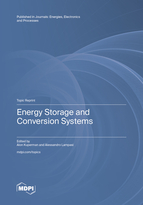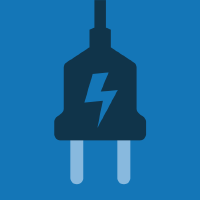Topic Menu
► Topic MenuTopic Editors


Energy Storage and Conversion Systems

A printed edition is available here.
Topic Information
Dear Colleagues,
Energy storage and conversion are crucial topics for research and industry, especially in the perspective of a sustainable development. Scientific and technological progresses in these fields may improve the potential capabilities and the efficiency in the use of energy both traditional, renewable and unconventional sources.
Energy storage technologies, such as batteries, fuel cells, supercapacitors (ultracapacitors), superconducting magnetic energy storage (SMES), combined with reductions in costs, are creating new scenarios and opportunities in the development and the market of energy generation, grids, industrial plants, complex systems and consumer electronics.
We would like to invite submissions to this Topic to collect the latest developments and applications in these interdisciplinary fields and to provide a common framework to authors from different research areas.
The Topics of interest for publication include, but are not limited to, the following:
- Energy storage theory and applications;
- Energy conversion theory and applications;
- Power electronics and converters for smart grids, microgrids and electrical/hybrid vehicles;
- Power converters for renewable sources, such as solar, wind, hydro and marine power;
- High-voltage direct current (HVDC) grids and conversion systems;
- Experimental techniques for characterization and diagnosis of energy storage and conversion systems;
- Approaches and tools for modeling and simulation;
- Batteries technologies, processes, materials, test and modeling;
- Fuel cells and hydrogen-based systems;
- Supercapacitors (ultracapacitors) and lithium-ion capacitors;
- Superconducting magnetic energy storage (SMES);
- Thermal energy storage, cogeneration and thermal management;
- Combination and integration of several energy sources and storage solutions;
- Control algorithms, including artificial intelligence tools;
- Management systems, such as battery management systems (BMS);
- Power quality, load management, peak shaving and back-up issues;
- Energy harvesting and recovery;
- Reliability, resilience and safety of complex systems and grids;
- Technical-economical evaluations and market analyses.
Prof. Dr. Alon Kuperman
Dr. Alessandro Lampasi
Topic Editors
Keywords
- energy storage
- energy conversion
- renewable energy
- power generation
- energy management
- power systems
- power electronics
- power converters
- smart grids
- electrical vehicles
- batteries
- supercapacitors
- fuel cells
- electrical machines and drives
- testing and modeling
Participating Journals
| Journal Name | Impact Factor | CiteScore | Launched Year | First Decision (median) | APC |
|---|---|---|---|---|---|

Energies
|
3.2 | 5.5 | 2008 | 16.1 Days | CHF 2600 |

Electronics
|
2.9 | 4.7 | 2012 | 15.6 Days | CHF 2400 |

Processes
|
3.5 | 4.7 | 2013 | 13.7 Days | CHF 2400 |

Electricity
|
- | - | 2020 | 20.3 Days | CHF 1000 |

Solar
|
- | - | 2021 | 16.9 Days | CHF 1000 |

MDPI Topics is cooperating with Preprints.org and has built a direct connection between MDPI journals and Preprints.org. Authors are encouraged to enjoy the benefits by posting a preprint at Preprints.org prior to publication:
- Immediately share your ideas ahead of publication and establish your research priority;
- Protect your idea from being stolen with this time-stamped preprint article;
- Enhance the exposure and impact of your research;
- Receive feedback from your peers in advance;
- Have it indexed in Web of Science (Preprint Citation Index), Google Scholar, Crossref, SHARE, PrePubMed, Scilit and Europe PMC.

